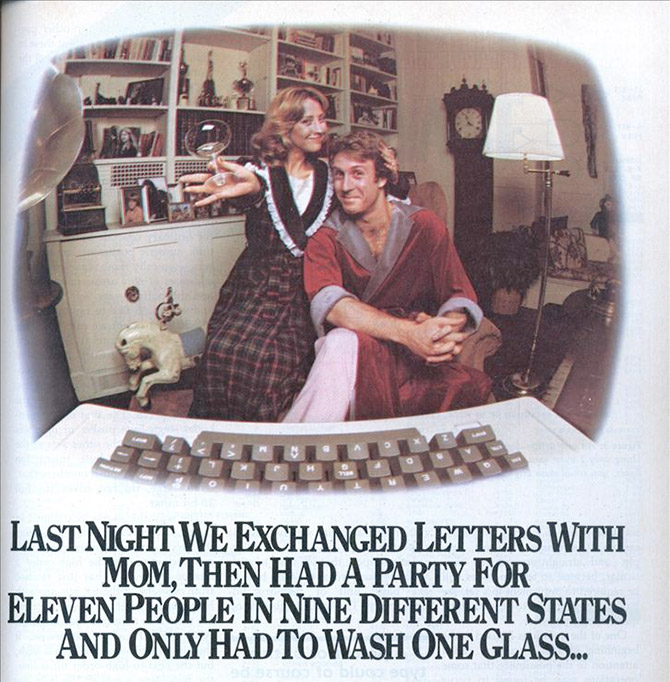
Sept. 24, 1979: First Online Service for Consumers Debuts
The company known as Compu-Serve, and later CompuServe, opened its doors in 1969, providing dial-up computer timesharing to businesses. Over the next decade, it grew into a solid business providing corporations with online data.
But the idea of offering a similar service to consumers might have seemed a little risky in 1979, when personal computers still seemed like a wild and crazy idea to most people. It was such an oddball notion that CompuServe’s own corporate sales force mocked their company’s fledgling consumer service as “schlock timesharing.”
Launched as MicroNET in 1979 and sold through Radio Shack stores, the service turned out to be surprisingly popular, thanks perhaps to Radio Shank’s Tandy Model 100 computers, which were portable, rugged writing machines that dovetailed very nicely with the fledgling, 300-baud information service.
A competing online service, The Source, launched the same year, but didn’t grow as fast. CompuServe eventually acquired and then deep-sixed The Source in 1989.
MicroNET was renamed the CompuServe Information Service in 1980. Around the same time, CompuServe began working with newspapers to offer online versions of their news stories, starting with the Columbus (Ohio) Dispatch in 1980. At least 10 major newspapers were offering online editions through CompuServe by 1982, including The Washington Post, the Los Angeles Times, and the San Francisco Examiner.
While it seems a bit ridiculous now, this video shows what the Examiner’s futuristic online news offering looked like in 1981.
But it was chat, not newspapers, that people used most on CompuServe. The “CB Simulator,” released in 1980, was one of the first online real-time chat programs in the world, and CompuServe users took to it like ducks to water. The CB Simulator, with 40 separate “channels,” soon accounted for 20 percent of the time used on CIS.
CompuServe added a wealth of other features: near–real-time stock quotes, weather reports (with downloadable weather maps), lively forums, even airplane-ticket booking through the Eaasy Saabre system. And, of course, there was e-mail, which Compuserve apparently trademarked as “Email”.
CompuServe e-mail addresses took the form of a strange collection of octal digits, separated by a comma, such as 77241,443 — or its internet equivalent, 72241.443@compuserve.com (my actual address for several years).
In early 1981, CompuServe executives were boasting that it had 10,000 subscribers. Subscribers would number in the millions by the mid 1990s, and the consumer service would account for more than half the parent company’s revenue.
CompuServe’s heyday was the early 1990s, when it was the largest and most-popular online service in the United States. However, CompuServe’s text-centric interface and by-the-minute fees eventually made it an easy target for AOL, which offered a prettier face and unlimited, all-you-can-use service for a low monthly fee. Plus, AOL aggressively marketed itself by mailing zillions of CDs (each of them offering a ridiculous number of free online hours) to any remotely likely customer.
CompuServe struck back with flat-rate plans and mass mailings of its own, but it was too late. Both services were overtaken by the internet by the end of the 1990s.
As ISPs began offering simple, easy ways to connect with the internet — and the number of resources available on the web grew — the “closed garden” of carefully selected services offered by the likes of CompuServe seemed less and less attractive. Its consumer online service was eventually sold to AOL, which more or less neglected it, until earlier this year, when CompuServe Classic closed its doors for good on June 30.
CompuServe lives on as a subsidiary of AOL, but it’s now a generic, $18-a-month ISP, and the former denizens of its online space have long since moved on, even though some of the forums remain online in web form.